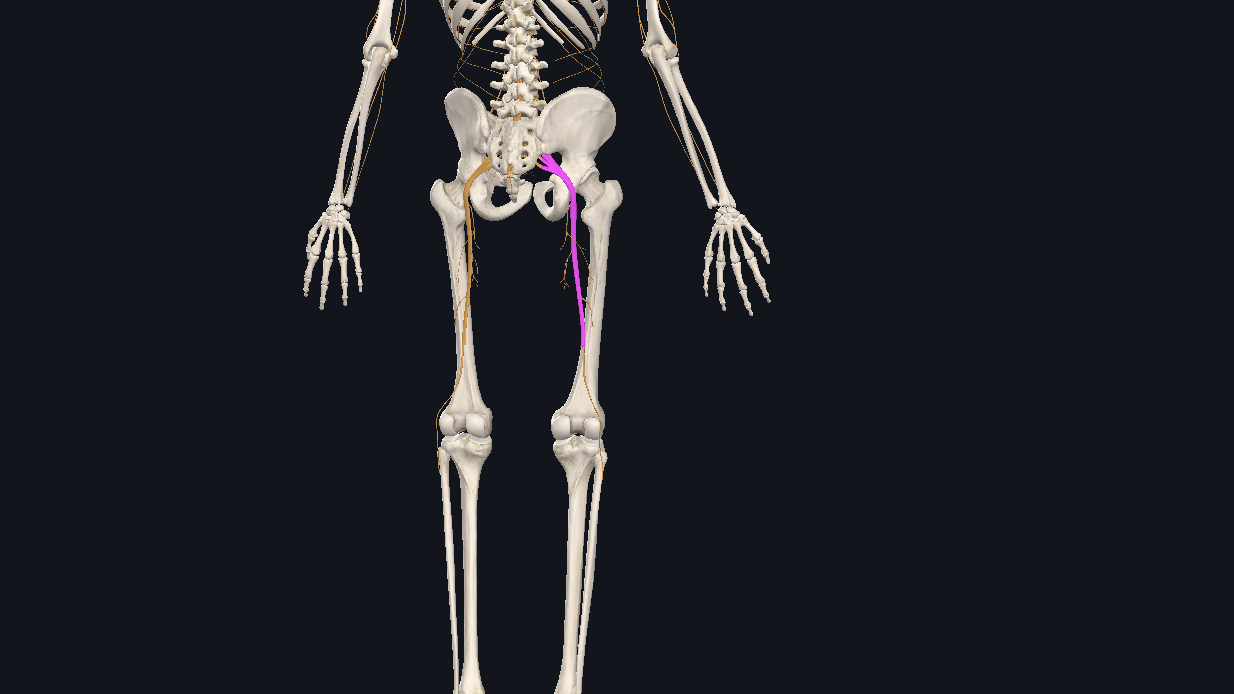Fixing Sciatic Nerve Pain With 3 Easy Exercises
If you’ve ever suffered from sciatica, or pain that maybe runs from your back down into your legs, or you know someone who’s been through this before, you’ve seen how rough it can be, and this blog is going to be very valuable for you.
*Disclaimer this post is for educational purposes, consult with a clinician to determine the best course of care and movements for your pain, or reach out to us for a consult*
Today, we’re going to show you three basic exercises that you can do to help combat sciatic pain. First I will give a brief anatomy lesson about where your sciatic nerve is, and also discuss some of the common misbeliefs that are associated with sciatic pain, and how you can better approach it so that you can actually tackle it once and for all.
Hi, my name is Dr. Antonio with Live Loud Chiropractic and Coaching here in Lafayette, Colorado. Today, we’re going to be talking about relieving sciatic nerve pain!
PLAY VIDEO ⬇︎
Common Question About Sciatic Nerve Pain
- What are the best stretches that I can do?
- What are the best physical therapy exercises I can do for sciatic pain?
- What are the best stretches I can do for sciatic pain?
- Why do I only have pain on one side of my back and down into my hip?
- Why isn’t it the same every day and it changes?
- Why did I just get this sudden onset of pain into my hip?
And a lot of common places we see sciatica pain coming up is not necessarily all the way down the back of the leg as most of us might think. You might just be experiencing it right into your buttock region, or your hip region and a little bit down into your leg. And so there are some nuances there that are going to be very important for you to be able to determine what is the actual cause of the sciatic pain.
We want to be able to help you provide relief, but it’s difficult to ascertain and assess what your actual cause is.
If it is Sciatic Nerve Pain, nerves are very sensitive, and you don’t want this to turn into something more that will create more symptoms, more agitation, numbness, pain, or tingling.

What is the Sciatic Nerve?
The sciatic nerve is the big, long, thick nerve that runs from the front side of the pelvis where the lumbar nerve roots come, through the pelvis, and then runs down the backside. Now keep in mind, what you don’t see are all the tiny little nerves branching off that supply function and sensory components to the gluteal muscles.
So as we slowly add some of these muscle layers on, we have deeper levels of the glute this is the piriformis which often gets blamed for sciatica symptoms. But we believe it’s not as important as other issues.
Your glutes cover that, so a lot of times the pain in the hip is a sign of a pinched nerve. Likely something in the back is causing a pinched nerve and that’s why you’re getting symptoms that are referred down into the leg. From time to time, you can get sciatic symptoms that are all the way down past the knee and into the foot and into the lower extremity.
But more commonly, we see this happen in the hip. What I want you to take note of are the lower back structures. In between all the lumbar vertebrae, there are discs, and in between the discs, there are the nerve roots coming in and out of the spinal column. These nerve roots then come down together and create the sciatic nerve. This is where a pinched nerve often occurs, a lot more frequently than the classic piriformis syndrome that gets blamed.

Where Does the Pain Come From?
Sciatic pain is a very common diagnosis, and it is even more commonly misdiagnosed, as it is used as a general kind of region open for interpretation. But we want to be more specific with the diagnosis so that you can be very time efficient with your exercises. Usually, as we feel a pinched nerve, we would assume that the side of the pain is where the actual pinched nerve is. However, those tender points that you feel in the glutes and down to the leg might just be a symptom of the pinched nerve that’s up higher.
Many people are just rolling out and stretching and not getting the relief that they need and deserve, because they were improperly instructed. They don’t realize it’s actually coming from their back, but rather, they think it’s coming from their hip, or their piriformis, or their hamstring, or something like that. But if you start to pay attention to when your symptoms in your leg increase, I have a feeling that you’re going to also find that your lower back pain symptoms tension or whatever that might be, might also be increasing, which would be highly indicative that the pain is coming from the back and not necessarily the leg.
We wanted to explain this so you can understand why we’re giving you exercises specific to the lower back. There are methods and strategies that can help alleviate sciatic symptoms, but we’re talking about fixing, we’re not just talking about alleviating. Alleviating is putting a bandaid on it. But what we’re looking to do is actually find where the nerve is pinched, so that you can create solutions you actually need.
I hope you enjoy these exercises, which are going to be super helpful for you.
Best Movements for Sciatic Nerve Pain
1. Door Squats
Our first exercise is for those who are having sciatic pain and hip pain associated with lower back pain. Door squats allow you to offload the lower back into the hips, so that you can continue to move and not overload them where they feel like they’re only getting tighter.
Grab both handles on either side of an open door. Have a wide stance in order to maximize range of motion in the hips without flexing the lower back.
Then lean back like you’re water skiing so your arms take over most of the slack and weight. As you squat, use your legs, hips, and quads, as well as your arms to help guide you. Lean all the way back, using the best form possible, but also use the doorknobs to help keep your spine nice and straight.
2. Quadruped Hip Drops
Quadruped hip drops help alleviate all the tension in the lower back. It also works to help reduce any pain that may be caused by a herniated disc or pinched nerve that causes pain down the legs.
Start on your hands and knees, with your hands slightly in front of your shoulders. From there, shift your body forward, and gently let your hips sag to the ground in an “upward dog” position. Be sure not to force your hips down, but rather, let gravity guide you down as your arms prop you up. Repeat this back-and-forth motion until you feel some release.
3.Hip Hinge Movement
The constant motion of bending over not only puts tension on the sciatic nerve but also puts pressure on the lower back. Our solution is a simple hip hinge movement.
Every time you bend over, likely to pick something up around the house, be sure you’re bending and folding at the hips in order to maintain a straight long spine. This puts the weight into the hamstrings and legs, rather than the lower back. The hips simply go back and forth. Shift the hips, bend at the knees, and avoid loading weight in the lower back.
Conclusion
And there you have it!
Our top three exercises for fixing sciatic nerve pain. These are simple, but they’re so powerful. We hope you will find at least one exercise that works best for you. Take them step by step, inch by inch, But remember, it takes application. You can’t just do one set of 20 and be healed. If we’re assuming there’s an issue causing this, it’s going to take repetition multiple times a day, even once an hour, depending on what the severity is.
Take them step by step, inch by inch, and soon it’ll be a habit. But if it’s not creating a benefit, then we encourage you to seek external help and dive deeper into figuring out what will work for you.
Please share this with someone you know that is suffering from sciatic symptoms, and we hope that it brings you or them as much relief and benefit that it’s brought myself, and our patients here at Live Lab.
Keep up the great work and Live LOUD!




